Title: Probing the Solar Interior with Lensed Gravitational Waves from Known Pulsars
Authors: Ryuichi Takahashi, Soichiro Morisaki, and Teruaki Suyama
First Author’s Institution: Hirosaki University, 3 Bunkyo-cho, Hirosaki, Aomori 036-8561, Japan
Status: Published in ApJ [open access]
Forget X-ray vision—how about gravitational wave vision? In today’s paper, a team of researchers examine the possibility of using gravitational waves from distant pulsars to learn about our own sun. Much like the terrestrial seismologists and geologists who peer into the Earth by listening carefully to the ways waves are distorted as they travel through its many layers, these imagined future gravitational heliophysicists would use the subtle distortions of gravitational waves which have passed through the sun to learn about its inner contents.
Multimessenger Seismology?
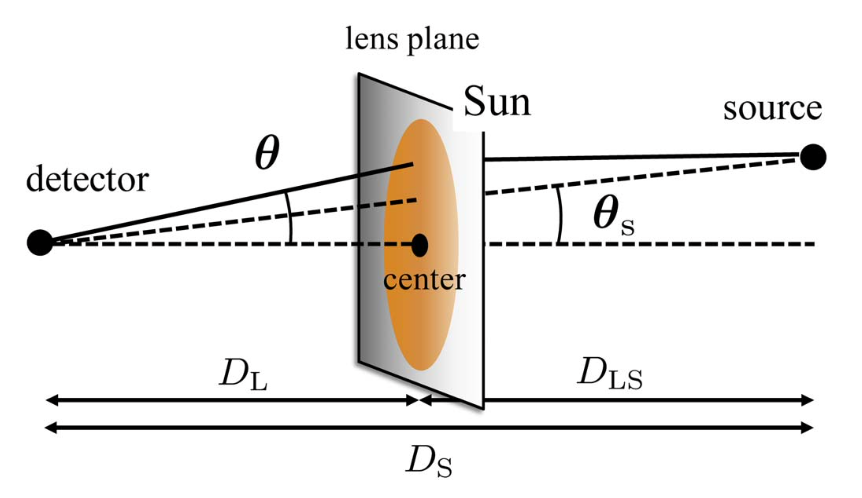
The idea of using the interaction between waves and normal matter to peer under the surface of otherwise opaque objects has a longstanding history in physics. Think for example of the idea of seismic tomography, one of the main tools used by seismologists and geologists to understand the make-up of the interior of the Earth. As powerful shock waves move through the Earth after seismic events like earthquakes, they come into contact with regions of material which may differ in their composition, density, temperature, and so on. Depending on the wave frequencies and the properties of the materials with which the waves come into contact, these waves will reflect, refract, diffract, or be otherwise altered from their initial waveform. Measuring the properties of these waves when they make contact with the surface again at different points around the world can thus tell us a great deal about what they may have encountered on their journey through the depths.
Similarly, when electromagnetic waves (light) encounter solid objects, they can undergo a number of interactions: certain wavelengths will be scattered or absorbed, and others may pass directly through an object. This is roughly speaking how X-ray imaging works: certain high frequency electromagnetic rays can easily pass directly through your soft skin, but will be reflected upon encountering denser material like bones, allowing us to reconstruct images of the interior of our own bodies without the need for invasive surgeries (thanks, science!).
Today’s paper, however, examines the feasibility of doing similar reconstructions but with waves of a different kind: gravitational waves. Gravitational waves, which have been discussed at length in previous Astrobites, are a hot topic right now within the astrophysics community given that the technology to directly detect their subtle presence has only come to maturity within the past decade or so. This is because gravitational waves, which are produced by the asymmetric motion of massive objects like black holes in binary orbits, produce extremely subtle effects here on Earth due in part to the weakness of the gravitational force and in part to the large distances the waves have typically traversed to reach us. Now that we are measuring these faint signals with regularity in ground-based gravitational wave detectors like LIGO, VIRGO, and KAGRA, interest has been growing in finding more and more exotic ways to use this brand new window into the universe to uncover its many secrets.
To understand the particularly out-there idea behind today’s paper, we need to introduce at least one further concept: gravitational lensing. Gravitational lensing occurs when particles (or waves) travel close to a massive source and as a result have their trajectories altered. When a massive source (like a galaxy cluster) sits more or less directly between the Earth and some distant object (like an individual galaxy), this deflection can act like a lens, focusing the light from the background galaxy towards the Earth to make it appear bigger, brighter, or even more emoji-like. Additionally, as waves of any kind travel past such a lens, they will appear to take longer to reach the other side than they would have if there were no massive source. This effect is known as gravitational time-delay, and it can sometimes manifest in ways not too dissimilar from the way in which light appears to “slow down” when passing through dense mediums like water. Gravitational lensing can cause all sorts of waves including gravitational waves to undergo many distorting effects similar to light traveling through media of varying densities or seismic waves traveling through the interior of the Earth.
Taking all of these effects into account, we can begin to see why the idea of using gravitational waves to probe the interior of the sun isn’t so far-fetched. While electromagnetic waves cannot typically pass into and out of the sun due to their interactions with dense solar material, gravitational waves from a source behind the sun would pass through easily, only experiencing distortion due to the aforementioned lensing effects caused by the varying density of the sun along the line of sight between detectors on Earth and the source of the gravitational waves. While this idea has been explored before, today’s authors attempted a comprehensive analysis of what these distortions might look like for a set of real sources, and examined how feasible it would actually be to detect them in present or future gravitational wave observatories. So can it be done? As it turns out, with some upgraded detectors, a dash of new millisecond (very fast-spinning) pulsar discoveries, and a bit of luck: it can!
Looking for Magic Millimeter Mountains
Unlike with light waves or even some seismic waves, humans do not have the capacity to generate gravitational waves of sufficient power to be measured and manipulated for the purposes of doing experiments. Instead, if we want to use these new waves to our benefit, we have to get clever with what nature has provided for us. Firstly, what we will need is a source of continuous gravitational waves. Unlike most of what LIGO sees right now, which are the signature “chirps” of compact objects undergoing their last seconds of merging, continuous waves (meaning gravitational wave signals that are continuously emitted from a source and detectable for some appreciable amount of time) which are expected to be seen by ground-based detector are most likely to come from tiny (sub-millimeter scale) deformations (sometimes called “mountains”) on the surface of rapidly-rotating pulsars. Once gravitational wave detectors increase in sensitivity enough to finally detect these waves, researchers will want to find sources which occasionally pass behind the sun from our perspective here on Earth. Over the course of several hours as the Earth moves around in its orbit, detectors on Earth may be able to observe how this continuous signal changes as it appears to pass behind different parts of the sun, like watching a straw appear to bend when lowered into a glass of water.
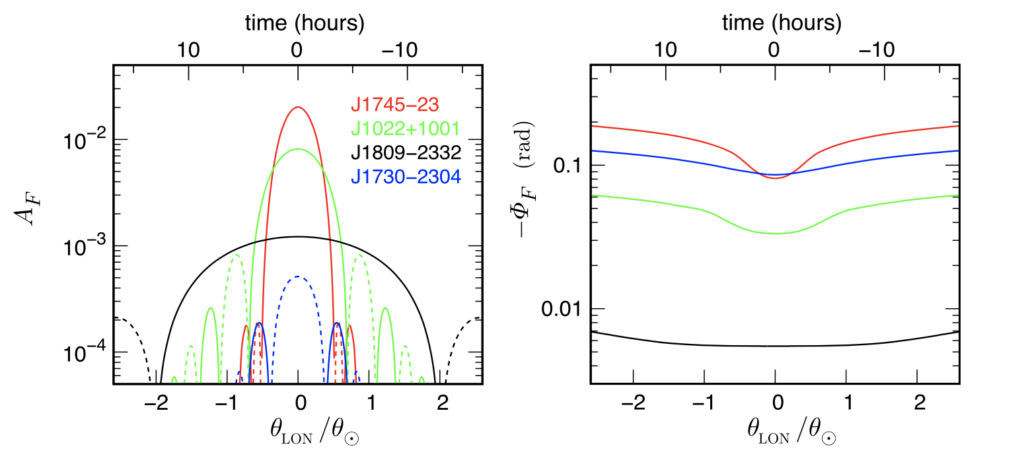
The authors of today’s paper employ mathematical formulas (that are not too dissimilar from what one would see in an introductory optics course!) to calculate the amount of deflection, convergence, and time-delay experienced by gravitational waves which pass behind the face of the sun at various angles relative to its center. Further wave-optics calculations are employed to find the corresponding amplification factors and phase offsets that waves of different frequencies would experience at these various angles. Their results are clearly shown in Figure 2: as each candidate pulsar (labeled by the different colored lines) appears to pass behind the face of the sun, their corresponding gravitational wave signals will be amplified and offset in phase in complicated ways determined in part by the frequency of each gravitational wave and how closely the signal gets to passing directly behind the center of the sun. By understanding how strong these effects are for continuous waves with different frequencies and amplitudes, the authors can begin to assess what it will take to detect them.
As it turns out, the ideal continuous-wave-emitting pulsars are those with high rotational frequencies (>10 Hz) and which pass as close behind the sun’s center as possible. When applying this cutoff to catalogs of known pulsars, only four currently fit the bill. While this doesn’t sound ideal, the authors go on to acknowledge that there are expected to be thousands more fast-spinning millisecond pulsars within our own galaxy which we have yet to discover, many of which could also turn out to pass behind the sun on occasion.

With all this background knowledge in hand, the primary question left to tackle is: can these slight deformations in the continuous waves actually be detected with enough confidence to infer the density of different layers of the sun? As to whether the lensing signal could be detectable at all, the authors of today’s paper find that such a detection could be made with a high degree of confidence using known pulsars with about one year’s worth of observation time given a signal-to-noise ratio (SNR) of ~100 or greater. SNR values can depend on many factors including the loudness of a given source, the sensitivity of the detector, and the timespan of data collection, but to put this number in perspective, current SNR upper limits for continuous wave detections from LIGO searches are estimated to be around ~10.
Unfortunately, accurately measuring the solar density at several different solar depths is even trickier, as the accuracy of each measurement depends on a variety of factors including how many total layers of the sun one attempts to measure and how one sets the distance between each layer. For one year of continuous wave observation of the three best pulsar candidates, the SNR needed to accurately measure the solar density at two different layers is found to be ~104, which is an order of magnitude higher than is even expected from the next-generation gravitational wave detectors Cosmic Explorer and the Einstein Telescope. To measure densities across 6 or 10 different layers of the sun’s interior, the SNR requirements grow to ~106 and ~107, respectively, well beyond the capabilities of planned detectors unless more rapidly-spinning pulsars passing behind the sun can be found and loudly heard in these future detectors.

Prospects for Gravitational Wave Vision
In recent years, combining gravitational waves with gravitational lensing has been proposed as a way to learn all sorts of new things about our universe from constrains on the Hubble constant to independent measurements of the masses of distant stars. While it may take many more years for this sort of analysis to mature to a point where it can give us useful information about our own sun’s density profile, the fact that it may be possible at all is remarkable. For many decades the detection of gravitational waves was thought to be impossible. Now, not only are we detecting them with regularity, but we are finding all sorts of new ways to learn about our universe with each passing day—and that’s something to be excited about, even if you won’t be seeing gravitational wave vision goggles in stores anytime soon!
Astrobite edited by Jessie Thwaites
Featured image credit: NASA/ESA/CSA imagery (sun, Earth, and deep space) modified by the author

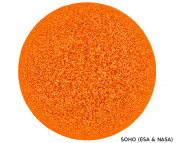
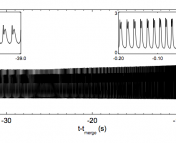
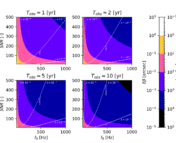

Before the observation can be done, the source would have to be very precisely characterized. Then if the Sun should occlude the source some good science could be done.